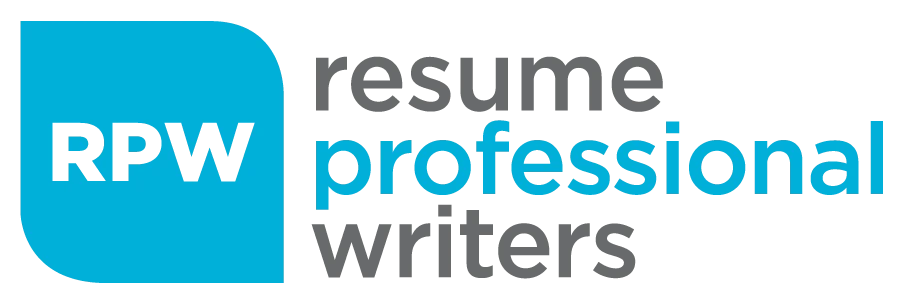In today’s competitive job market, your resume is often your first opportunity to leave a lasting impression on potential employers. The key to capturing the attention of hiring managers lies in the strategic use of headings on your resume.
These crucial elements not only organize your resume content but also highlight relevant skills, emphasizing your professional qualifications and experiences. From creating an impactful resume header to crafting a tailored resume summary, this guide will explore the essential five resume titles and sections that can set you apart from other candidates.
Learn how to optimize your resume with effective section headings to ensure your application stands out in a crowded field. Whether you’re entering the workforce or considering a career change, mastering the art of resume headings is your pathway to job search success.

Resume Header and Summary
Professional Resume Header
A clear and concise resume header is crucial for making a good first impression on hiring managers. This section serves as the most prominent element of your resume, catching the eye of potential employers and setting the tone for the rest of your job application. Consider looking at various resume header examples to understand how to effectively format this section and make a strong first impression.
Include your name, job title, phone number, and email address in your resume header. It’s also beneficial to add your LinkedIn profile or personal website to your resume objectives provide hiring managers with a more comprehensive view of your professional image and qualifications.
Use a professional font and formatting to make your resume header stand out. Consistency in style and alignment will enhance the overall professional appearance of your own resume template, making it easier for hiring managers to focus on your essential contact information.
Keep the top of your resume header concise and to the point, avoiding unnecessary information. This ensures that all the essential details are immediately visible, making it easier for applicant tracking systems to parse your information accurately.
Use keywords from your resume example the job description to tailor your resume header to the job position. This strategic approach can help your resume pass through applicant tracking systems and reach the eyes of hiring managers.
Contact Information
A well-structured contact information section is crucial for a successful job search. This section should be part of your professional resume header and include all the essential details that hiring managers need to contact you. A clear and concise contact information section makes it easier for hiring managers to find the information they need, ensuring that your application stands out.
Include your full name, job title, phone number, and email address. It’s also beneficial to add your LinkedIn profile or personal website to provide a more comprehensive view of your professional image. Ensure that your contact information is easy to read and free of errors, as any mistakes here could hinder potential employers from reaching out to you.
By presenting your contact information clearly and professionally, you enhance your resume’s overall effectiveness, making it easier for hiring managers to get in touch with you and increasing your chances of landing an interview.
Resume Summary
A professional resume summary should highlight a professional summary of your relevant skills and experience. This brief description acts as your elevator pitch, summarizing your professional qualifications and giving the hiring manager a snapshot of your capabilities.
Use action verbs to describe your achievements, hard skills, and qualifications. This not only makes your resume more dynamic but also aligns with industry-specific terminology that hiring managers are likely to look for.
Keep your resume summary concise and focused on the most important information. Highlight relevant accomplishments and transferable skills that align with the job posting to demonstrate your suitability for the desired position.
Use keywords from the job description to tailor your resume summary to the job position. Identifying keywords and incorporating them into your summary can enhance your entire resume part’s visibility in applicant tracking systems.
Avoid clichés and generic phrases in your resume summary or objective part. Instead, focus on specific achievements and unique skills that differentiate you from other applicants. This approach will help you stand out in a crowded field of candidates.

Essential Resume Sections
Work Experience
- List your work experience in reverse chronological order, with the most recent experience first. This format helps hiring managers quickly identify your most recent roles and responsibilities, providing a clear timeline of your career progression.
- Use clear and concise headings to separate each job and highlight your achievements. This organizational strategy ensures that each job position stands out, making it easier for potential employers to scan your resume.
- Include relevant skills and qualifications in each job description. Tailoring your job descriptions to include industry-specific terminology and keywords from the job posting can enhance your resume’s appeal to both hiring managers and applicant tracking systems.
- Use action verbs to describe your achievements and responsibilities. Strong verbs like “managed,” “developed,” and “implemented” add impact and clarity to your descriptions, showcasing your contributions effectively.
- Quantify your achievements by including numbers and statistics. Demonstrating the tangible results of your efforts, such as “increased sales by 20%” or “managed a team of 10,” can make your accomplishments more compelling to potential employers.
Education
- List your education in reverse chronological order, with the most recent degree first. This approach highlights your latest academic achievements, making it easier for hiring managers to assess your educational background.
- Include the name of the institution, degree earned, and relevant coursework. Detailing your education provides a comprehensive view of your academic qualifications and areas of expertise.
- Highlight any relevant academic achievements or awards. Recognitions such as scholarships, honors, or dean’s list can set you apart from other candidates, demonstrating your dedication and excellence in your field.
- Use clear and concise headings to separate each degree and highlight your achievements. This structure ensures that each educational milestone is easily identifiable, contributing to a well-organized resume.
Certifications and Licenses
Including a certifications and licenses section on your resume is an excellent way to highlight your professional qualifications and industry-specific expertise. This section can be labeled as “Certifications,” “Licenses,” “Professional Certifications,” or “Industry Certifications,” depending on what best fits your background.
List all relevant certifications and licenses that are pertinent to the job you are applying for. Make sure to include the name of the certification, the issuing organization, and the date earned. This information provides hiring managers with a clear understanding of your professional credentials and your commitment to maintaining industry standards.
By showcasing your certifications and licenses, you demonstrate your dedication to professional development and your readiness to meet the demands of the job position.
Skills and Achievements
Key Skills
- List your key skills and qualifications relevant to the job position. This section should reflect the skills that align with the job description, emphasizing your suitability for the role.
- Use keywords from the job description to tailor your key skills to the job position. Incorporating specific terms can improve your resume’s chances of passing through applicant tracking systems and reaching hiring managers.
- Include technical skills, language proficiency, and any other relevant skills. A comprehensive skills section showcases your diverse capabilities, from coding languages to soft skills like communication and teamwork.
- Use clear and concise headings to separate each skill and highlight your achievements. This format makes it easy for potential employers to identify your strengths and areas of expertise.
Achievements
- List your achievements and qualifications relevant to the job position. Highlighting your accomplishments demonstrates your ability to deliver results and adds value to your application.
- Use action verbs to describe your achievements and responsibilities. Dynamic language captures the attention of hiring managers, conveying your proactive approach and impact.
- Quantify your achievements by including numbers and statistics. Metrics provide concrete evidence of your success, making your achievements more persuasive.
- Highlight any relevant awards or recognition. Accolades such as “Employee of the Month” or “Top Sales Performer” can distinguish you from other candidates, underscoring your exceptional performance.
Languages
A languages section is particularly useful for highlighting your language skills, which can be a significant asset in many job positions. This section can be labeled as “Languages,” “Language Skills,” or “Language Proficiency.”
Include all relevant languages that you are proficient in, and make sure to specify your level of proficiency (e.g., beginner, intermediate, advanced). This information helps hiring managers understand your ability to communicate in different languages, which can be crucial for roles that require multilingual capabilities.
By clearly listing your language skills, you enhance your resume’s appeal, showcasing your ability to contribute to a diverse and globalized work environment.

Optional Resume Sections
Online Profiles or Portfolios
- Include links to your professional online profiles, such as LinkedIn or GitHub. These platforms can provide hiring managers with a deeper insight into your professional image, showcasing your work, projects, and professional connections.
- Use clear and concise headings to separate each profile and highlight your achievements. This organization helps potential employers quickly navigate through your online presence and identify relevant accomplishments.
- Highlight any relevant projects or work samples. Demonstrating your practical experience and expertise through tangible examples can strengthen your application by showcasing your ability to apply your skills in real-world scenarios.
- Use keywords from the job description to tailor your online profiles to the job position. By aligning your profiles with the job requirements, you increase the chances of your resume standing out in applicant tracking systems and to hiring managers.
Projects and Extracurricular Activities
- List any relevant projects or extracurricular activities that demonstrate your skills and qualifications. These experiences can provide a broader view of your capabilities and interests beyond your professional work history.
- Use clear and concise headings to separate each project and highlight your achievements. This clarity ensures that each project is easily identifiable, making it simple for potential employers to assess your contributions and skills.
- Include relevant skills and qualifications in each project description. Tailoring your descriptions to highlight industry-specific skills can enhance your resume’s appeal to hiring managers and applicant tracking systems.
- Use action verbs to describe your achievements and responsibilities. Dynamic language not only makes your resume more engaging but also effectively communicates your proactive approach and results-driven mindset.
Volunteer Work
- List any relevant volunteer work that demonstrates your skills and qualifications. Volunteer experiences can highlight your commitment to community involvement and your ability to apply your skills in diverse settings.
- Use clear and concise headings to separate each volunteer experience and highlight your achievements. This structure ensures that each experience is prominently featured, allowing potential employers to quickly identify your volunteer contributions.
- Include relevant skills and qualifications in each volunteer description. Tailoring your descriptions to align with the job position can enhance your resume’s visibility and appeal to hiring managers.
- Use action verbs to describe your achievements and responsibilities. Strong verbs add impact to your descriptions, showcasing your contributions and dedication effectively.
Resume Headers and Formatting
Effective Resume Headers
A well-crafted resume header is essential for making a strong first impression on hiring managers. It should include all the essential details that employers need to contact you, such as your name, job title, location, phone number, and email address. A professional resume header should also be easy to read and free of errors.
When creating a good resume header here, it’s important to keep in mind the following tips:
- Use a Clear and Concise Format: Ensure your resume header is easy to scan. A clean layout helps hiring managers quickly find your contact details.
- Include Key Information: Your name, job title, and location should be prominently displayed. This helps hiring managers immediately identify your relevance to the job.
- Professional Contact Details: Use a professional email address and phone number. This makes it easy for hiring managers to contact you and reflects your professionalism.
- Avoid Jargon: Steer clear of overly technical terms that may confuse hiring managers. Keep the language straightforward and professional.
- Action Verbs: While action verbs are more commonly used in other sections, ensuring your header is dynamic and engaging can set a positive tone for the rest of your resume.
By following these tips, you can create an effective resume header that will help you stand out from the competition and increase your chances of landing an interview.
Resume Formatting Tips
- Use a clear and concise format to make your resume easy to read. A well-organized resume allows hiring managers to quickly scan and identify your key qualifications and achievements.
- Use bullet points to separate each job and highlight your achievements. Bullet points create a clean and organized layout, making it easier for potential employers to digest your information.
- Use clear and concise headings to separate each section and highlight your achievements. This approach ensures that each section is distinct and easily navigable, enhancing the overall readability of your resume.
- Use white space effectively to make your resume easy to read. Adequate spacing between sections and elements prevents your resume from appearing cluttered, allowing hiring managers to focus on your essential details.
Crafting a Standout Resume
Crafting a standout resume requires more than just listing your experiences and skills; it demands strategic thinking and careful structuring to ensure your qualifications shine through. One powerful tool at your disposal is the use of well-crafted headings. Here are some advanced strategies to help you elevate your resume with strategic headings:
- Use Action Verbs: Start each bullet point with a strong action verb to describe your achievements. This makes your resume more dynamic and engaging.
- Prioritize Relevant Experience: Highlight the most relevant experiences and skills that align with the job description. This shows hiring managers that you are a perfect fit for the position.
- Bullet Points and Concise Statements: Use bullet points or concise statements to highlight your accomplishments and skills. This format makes it easier for hiring managers to quickly scan your resume.
- Tailor Your Headings: Customize your resume headings to match the job you’re applying for. This can help your resume stand out in applicant tracking systems and to hiring managers.
- Industry-Specific Terminology: Incorporate industry-specific terminology to demonstrate your expertise and familiarity with the field.
By using these strategies, you can create a standout resume that will grab the attention of hiring managers and increase your chances of landing an interview. Remember to keep your resume concise and easy to scan, and use clear and concise language throughout. With a professional title well-crafted resume, you’ll be well on your way to landing your dream job.

Crafting a Standout Resume
In summary, a professional training well-structured resume with clear and concise headings is essential in capturing the attention of hiring managers. By tailoring your resume header, summary, and sections to the job description, you can effectively highlight your relevant skills and accomplishments. For more personalized assistance, consider reaching out to our professional resume writers who can help you create a resume that stands out from other candidates.
Remember, your resume is your personal marketing tool, so make sure it reflects your professional qualifications and achievements in the best light. Additionally, consider incorporating industry-specific terminology and relevant links to your online profiles to further enhance your resume’s appeal. Leveraging these strategies can significantly boost your chances of securing your desired position.








